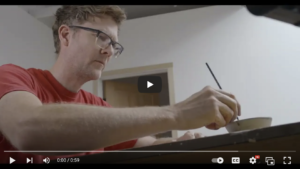Louisiana currently loses one football field of wetlands approximately every hour and a half. The state’s Comprehensive Master Plan for a Sustainable Coast established a $50 billion strategy for protecting and restoring the remaining wetlands– advancing solutions including marsh creation, beach and dune restoration, coastal forest conservation, flood walls, and sediment pipelines, which transfer river sediment to nourish marshlands. However,…
In New York City, the Billion Oyster Project was launched in 2014 by Murray Fischer and Peter Malinowski. At their headquarters at the Harbor School on Governors Island, BOP houses their laboratory and runs a shell recycling program where 8,000 lbs of shell per week are collected from over 70 restaurants and cured in giant mounds to be used in…
Historically, Bayview-Hunters Point has had the highest rates of home ownership among Black people in San Francisco but has suffered from generations of environmental injustice and neglect for basic infrastructure. Today, development of a network of parks along the southern waterfront is creating an opportunity for residents to envision the future of their neighborhood and economically participate in the investments…
New York is the most populous city in the United States. Known as the “concrete jungle,” it is often more valued for its densely built skyline than its natural landscape. However, over 40% of New York City’s land cover is green. Using fieldwork and remote sensing data, the Natural Areas Conservancy assessed the condition of 10,000 acres of natural areas…
For decades American cities have experimented with ways to remake themselves in response to climate change. These efforts, often driven by grassroots activism, offer valuable lessons for transforming the places we live. In ‘From the Ground Up: Local Efforts to Create Resilient Cities,’ design expert Alison Sant focuses on the unique ways in which US cities are working to mitigate…
In 2018, more than 30,000 properties in Baltimore were vacant buildings or lots, with almost four thousand buildings slated to be removed. The city contracted with Brick+Board, a social impact-focused salvage company, and Details, a social enterprise of the nonprofit organization Humanim, which provides jobs to those with barriers to employment…
Since 2009, Philadelphia has combined its commitment to making green spaces accessible to all its residents with a stormwater management approach that prioritizes green infrastructure. It set the ambitious goal to green a third of the existing impervious landscape within the city including schoolyards, vacant lots, and parks. This video animates of Packard Jennings illustration of Philadelphia’s pie-chart breakdown of…
In the early 2000s, Portland began one of the country’s first green infrastructure programs. For decades, Portland has been working to mitigate its combined sewer overflow events by improving the ecological function and health of its watersheds, conserving natural areas, and making room for flooding. Among these watershed-wide projects is the Tabor to the River program. The project piloted nature-based…
San Francisco has a long history of creating tactical experiments to reclaim its city streets. These efforts began with Bonnie Ora Sherk’s portable parks in the 1970s, exploded with the creation of the first Park(ing) Day by the design collective Rebar in 2005, and seeded the city’s Parklet and Shared Spaces programs today. Reclaiming city streets is a critical part…
Time-lapse of Packard Jennings doing an illustration for Alison Sant’s book ‘From The Ground Up,’ published by Island Press, 2022.









